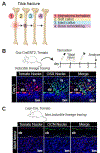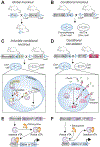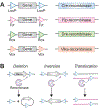Genetic models for lineage tracing in musculoskeletal development, injury, and healing
- PMID: 37156345
- PMCID: PMC10860167
- DOI: 10.1016/j.bone.2023.116777
Genetic models for lineage tracing in musculoskeletal development, injury, and healing
Abstract
Musculoskeletal development and later post-natal homeostasis are highly dynamic processes, marked by rapid structural and functional changes across very short periods of time. Adult anatomy and physiology are derived from pre-existing cellular and biochemical states. Consequently, these early developmental states guide and predict the future of the system as a whole. Tools have been developed to mark, trace, and follow specific cells and their progeny either from one developmental state to the next or between circumstances of health and disease. There are now many such technologies alongside a library of molecular markers which may be utilized in conjunction to allow for precise development of unique cell 'lineages'. In this review, we first describe the development of the musculoskeletal system beginning as an embryonic germ layer and at each of the key developmental stages that follow. We then discuss these structures in the context of adult tissues during homeostasis, injury, and repair. Special focus is given in each of these sections to the key genes involved which may serve as markers of lineage or later in post-natal tissues. We then finish with a technical assessment of lineage tracing and the techniques and technologies currently used to mark cells, tissues, and structures within the musculoskeletal system.
Keywords: Bone; Developmental biology; Fate mapping; Lineage tracing; Model; Skeletomuscular system.
Copyright © 2023. Published by Elsevier Inc.
Conflict of interest statement
Declaration of competing interest No competing interests to declare.
Figures



References
-
- Muhr J, Ackerman KM. Embryology, Gastrulation. [Updated 2022 Apr 13]. In: StatPearls [Internet] Treasure Island (FL): StatPearls Publishing; 2022. Jan-. Available from: https://www.ncbi.nlm.nih.gov/books/NBK554394/ - PubMed
Publication types
MeSH terms
Substances
Grants and funding
LinkOut - more resources
Full Text Sources

